-
Product Name
14-3-3 antibody
- Documents
-
Description
14-3-3 Rabbit Polyclonal antibody. Positive FC detected in HeLa cells. Positive IF detected in HepG2 cells. Positive IHC detected in mouse brain tissue, human testis tissue. Positive IP detected in mouse lung tissue. Positive WB detected in NIH/3T3 cells, HeLa cells, human brain tissue, Jurkat cells, mouse brain tissue, mouse kidney tissue, mouse liver tissue, mouse lung tissue, rat liver tissue. Observed molecular weight by Western-blot: 31 kDa
-
Tested applications
ELISA, IF, IP, IHC, WB, FC
-
Species reactivity
Human,Mouse,Rat; other species not tested.
-
Alternative names
14 3 3 antibody; 14 3 3 protein T cell antibody; 14 3 3 protein tau antibody; 14 3 3 protein theta antibody; 1C5 antibody; HS1 antibody; Protein HS1 antibody; YWHAQ antibody
-
Isotype
Rabbit IgG
-
Preparation
This antibody was obtained by immunization of 14-3-3 recombinant protein (Accession Number: NM_006826). Purification method: Antigen affinity purified.
-
Clonality
Polyclonal
-
Formulation
PBS with 0.02% sodium azide and 50% glycerol pH 7.3.
-
Storage instructions
Store at -20℃. DO NOT ALIQUOT
-
Applications
Recommended Dilution:
WB: 1:1000-1:10000
IP: 1:200-1:2000
IHC: 1:20-1:200
IF: 1:20-1:200
-
Validations
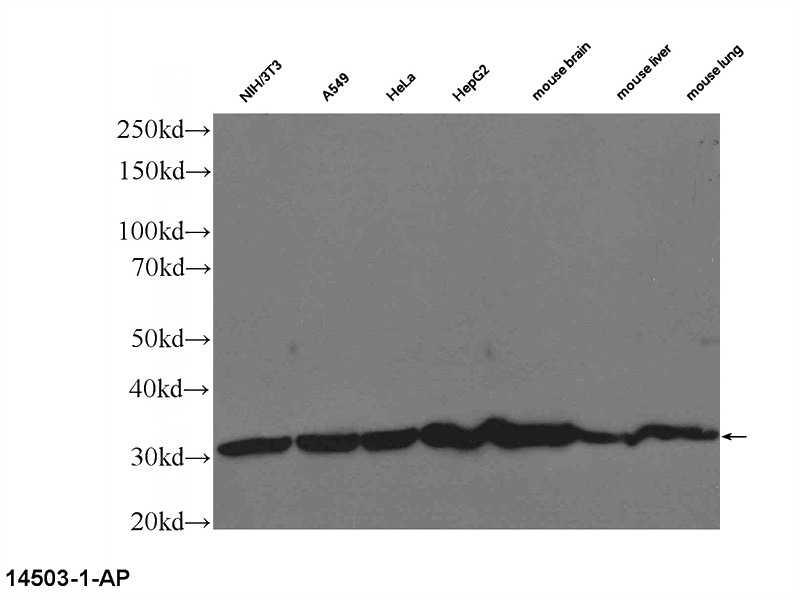
Multiple lysates were subjected to SDS PAGE followed by western blot with Catalog No:107658(14-3-3 Antibody) at dilution of 1:3000
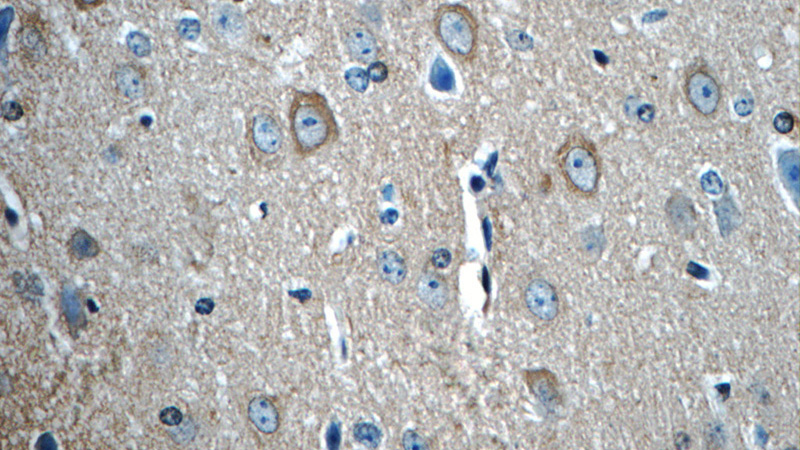
Immunohistochemistry of paraffin-embedded mouse brain tissue slide using Catalog No:107658(14-3-3 Antibody) at dilution of 1:50 (under 40x lens)
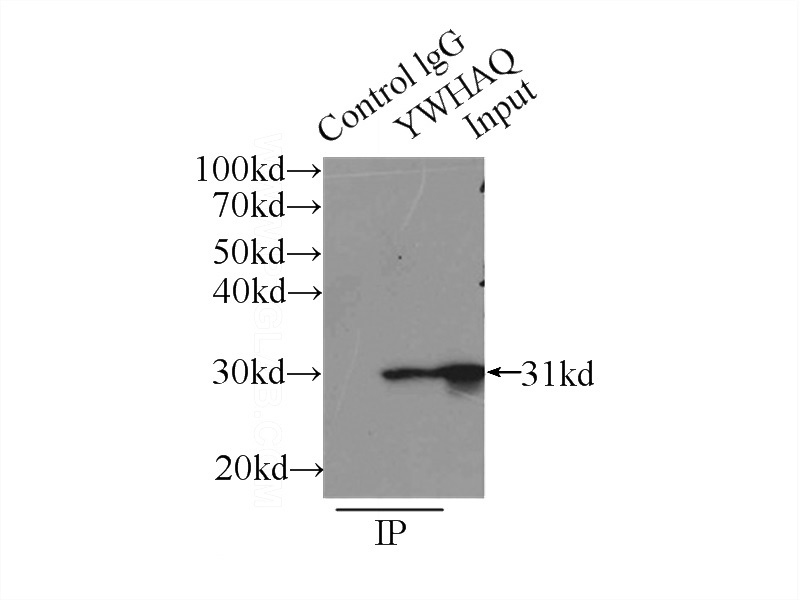
IP Result of anti-14-3-3 (IP:Catalog No:107658, 5ug; Detection:Catalog No:107658 1:500) with mouse lung tissue lysate 4000ug.
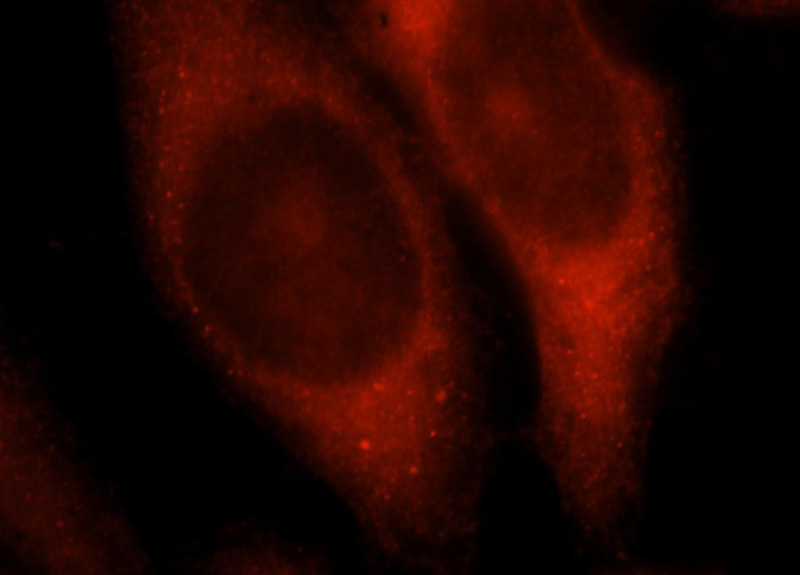
Immunofluorescent analysis of HepG2 cells, using YWHAQ antibody Catalog No:107658 at 1:25 dilution and Rhodamine-labeled goat anti-rabbit IgG (red).
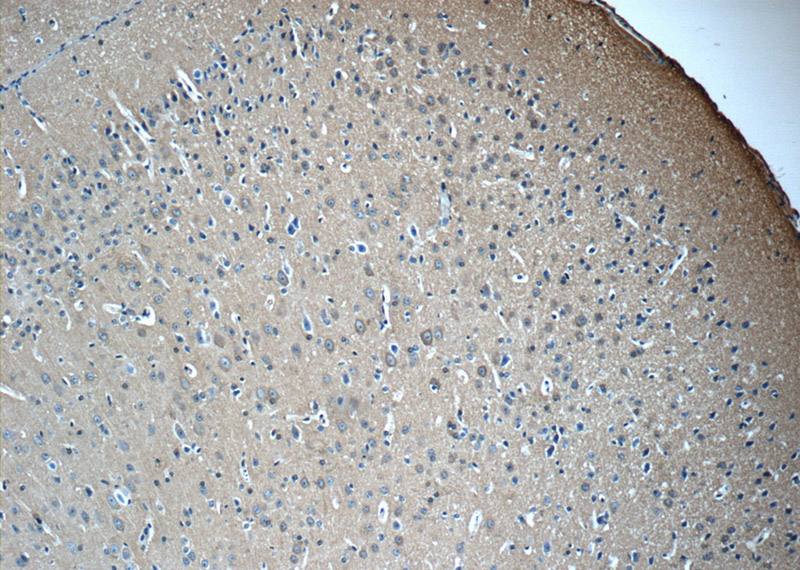
Immunohistochemistry of paraffin-embedded mouse brain tissue slide using Catalog No:107658(14-3-3 Antibody) at dilution of 1:50 (under 10x lens)
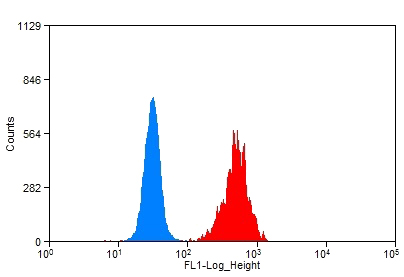
1X10^6 HeLa cells were stained with 0.2ug 14-3-3 antibody (Catalog No:107658, red) and control antibody (blue). Fixed with 90% MeOH blocked with 3% BSA (30 min). Alexa Fluor 488-congugated AffiniPure Goat Anti-Rabbit IgG(H+L) with dilution 1:1500.
-
Background
14-3-3 theta (also known as YWHAQ, or 14-3-3 tau) is a member of 14-3-3 proteins which were the first phosphoserine/phosphothreonine-binding proteins to be discovered. 14-3-3 family members interact with a wide spectrum of proteins and possess diverse functions. Mammals express seven distinct 14-3-3 isoforms (gamma, epsilon, beta, zeta, sigma, theta, tau) that form multiple homo- and hetero- dimmers. 14-3-3 proteins display the highest expression levels in the brain, and have been implicated in several neurodegenerative diseases, including Alzheimer's disease and amyotrophic lateral sclerosis. This antibody was raised against full-length 14-3-3 theta.
-
References
- Bai C, Tang S, Bai C, Chen X. Quantitative proteomic dissection of a native 14-3-3ε interacting protein complex associated with hepatocellular carcinoma. Amino acids. 46(4):841-52. 2014.
Related Products / Services
Please note: All products are "FOR RESEARCH USE ONLY AND ARE NOT INTENDED FOR DIAGNOSTIC OR THERAPEUTIC USE"
